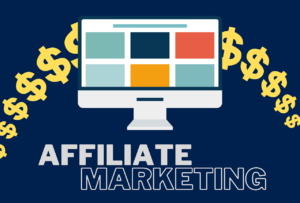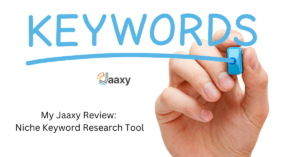In this article I’m going to break down what exactly (PPC) Pay Per Click marketing is all about and why it’s a key player for businesses aiming to thrive online.
If you’re new to digital marketing, you might wonder how ads seem to ‘follow’ you around the internet, appearing on different websites and search engine results. That’s pay-per-click marketing or usually referred to as Pay Per Click advertising at work. It’s an advertising model where businesses only pay when someone clicks on their ad – hence the name.
This isn’t just about getting your name out there; it’s about driving targeted traffic to your website and generating leads and sales. And the best part? You control your budget and pay only for results. It’s efficient and can be fine-tuned, making it an essential tool in your marketing arsenal.
Throughout this article, I’m not only going to show you the ropes of PPC but also give you the insider tips on how to make it work best for you. From understanding the basics to diving into advanced strategies, you’re going to find out about it all.
Fundamentals of Pay-Per-Click Advertising
When I talk about the pillars of digital advertising, pay-per-click (PPC) stands tall as a crucial component. So, what exactly is it? Pay-per-click advertising is a model where advertisers only pay when someone clicks on their ad. It’s a way to buy visits to your site rather than attempting to “earn” those visits organically.
PPC advertising isn’t a one-size-fits-all kind of deal. It spans across various formats, including search ads, display ads, social media ads, and even shopping ads. Each type serves a different purpose and suits different business goals. For instance, search ads can drive traffic to your landing page, while display ads are great for building brand awareness.
Adopting PPC into your marketing strategy comes with a host of benefits. It can lead to immediate traffic, copious amounts of data for optimization, and precise targeting options. However, it’s not without challenges. It demands constant monitoring, a good understanding of keyword strategy, and a pinch of patience to fine-tune your campaigns for the best results.
Now, I’m going to shift gears and talk about how the PPC model comes to life. This will set the stage for understanding how platforms like Google Ads and Microsoft Ads turn the concept of PPC advertising into actionable marketing campaigns for businesses of all sizes.
Deciphering How PPC Advertising Works
You might be wondering how pay-per-click advertising actually operates. Well, it’s a blend of art and science. PPC is all about placing bids on keywords that you believe potential customers will use when they’re looking for products or services like yours. When someone types a query into a search engine that matches your keyword, your ad has the chance to appear in the search results.
Now, it isn’t just the highest bidder who gets that coveted ad space. Search engines use something called a ‘quality score’ to determine which ads are the most relevant to users. That’s where the science comes in. Your quality score is based on a few factors, including the relevance of your ad to the keyword, landing page experience, and click-through rate (CTR).
Why is this important? Because your quality score affects both your ad placement and the cost you pay per click. If your ads are well-targeted and your landing pages are on-point, you could be paying less per click than competitors, even if they bid higher. It’s a more efficient use of your advertising budget.
I’m going to let you in on a little secret: the power of PPC isn’t just about showing up in searches—it’s about showing up in the right searches. You’re going to find out about the fine art of creating relevant ads, choosing effective keywords, and optimizing your bids to ensure that you’re not just getting clicks, but the right kind of clicks that could convert into business.
Now, as you gear up to learn about Google Ads and Microsoft Ads, remember these principles. They’re not only two of the biggest platforms; they’re battlefields where the fight for clicks is won or lost based on how well advertisers understand and execute on PPC’s core concepts. From bidding strategies to quality scores, mastering these facets could mean the difference between invigorating your business or simply inflating your expenses.
Navigating Google Ads and Microsoft/Bing Ads

I’m going to help you understand the big players in PPC: Google Ads and Microsoft /Bing Ads. These two are not just competing platforms; they each offer unique features and reach different audiences that can affect your PPC strategy.
Google Ads, previously known as Google AdWords, is the heavyweight in this space. It reaches an enormous audience due to Google’s dominance in the search engine market. That’s going to include access to Google Search Network and Google Display Network, which opens up a vast array of possibilities for targeting and ad placement.
Microsoft Ads, on the other hand, might not boast the same user numbers but don’t discount it too quickly. You’re going to find out about its integration with platforms like Bing, Yahoo, and MSN, which can access a significant user base that sometimes exhibits different demographics and behaviors compared to Google’s users.
Choose something that resonates with you and your target audience. Maybe you’re leaning towards Google Ads for its reach or Microsoft Ads for its often lower cost per click and unique audience. Each platform offers various tools for ad targeting, format options, and analytics, ensuring a tailor-made approach for advertisers.
In my opinion, to make the most of these platforms, you need to understand their nuances. I’ll talk about that more in the next section, where we’ll delve into the specifics of setting up and running your PPC campaigns within Google Ads and Microsoft Ads.
Implementing PPC in Google Ads and Microsoft Ads
Getting started with a PPC campaign in Google Ads and Microsoft Ads might seem daunting, but I’m going to break it down for you. You’re going to find that once you understand the basics, launching into the world of PPC can be straightforward and rewarding.
In my opinion, the first thing you should do is acquaint yourself with the interfaces of both Google Ads and Microsoft Ads. They each have their quirks, but the fundamental elements—such as setting up campaigns, ad groups, and ads—are pretty similar.
Now, creating an effective campaign involves choosing the right keywords, setting a budget, and crafting compelling ad copy. Google Ads provides a Keyword Planner tool, while Microsoft Ads offers a Keyword Research tool, both of which are invaluable for getting your campaign off the ground.
I’m here to tell you that monitoring and tweaking your campaigns is just as important as the setup. Keep a close eye on key metrics like click-through rate (CTR) and conversion rate. These figures will tell you if your ads are hitting the mark or if they need refinement.
One piece of advice—don’t spread your budget too thin. It’s tempting to try and appear for every relevant search term, but choose something that resonates with you and your target audience. Focus your budget on keywords that are performing well and adjust as necessary for maximum ROI.
So now, as we segue into the next section, remember that finding the right keywords is a critical step. And guess what? There’s a lot happening very quickly in the keyword research arena, which is where tools like Jaaxy come into play. This handy tool is going to take your PPC keyword research to the next level, allowing you to uncover hidden gems and outbid competitors effectively. Let’s move on to uncover how Jaaxy can refine your PPC campaigns with precision-targeted keyword strategies.
Leveraging Jaaxy for PPC Keyword Research
You’re going to find out about Jaaxy, a game-changer for PPC keyword research. This robust platform offers you an arsenal of features that can significantly refine your keyword strategy, ensuring that your PPC campaigns hit the mark. The importance of choosing the right keywords can’t be understated—it’s the lifeline of your PPC efforts.
Using Jaaxy, you’ll not only discover the keywords relevant to your niche but also gain insights into their search volumes, competition levels, and potential profitability. This isn’t just about volume; it’s also about intent—Jaaxy helps you identify the terms that are more likely to convert, giving you the edge over competitors.
Imagine having the ability to peer into your competitors’ campaigns. Jaaxy’s Competitive Keyword Analysis enables you to do just that. By analyzing which keywords are driving traffic to their sites, you can adjust your strategy to compete more effectively. Plus, you’ll have access to data on estimated traffic, QSR (Quoted Search Results), and SEO power, allowing you to make informed decisions.
In my opinion, utilizing Jaaxy’s Alphabet Soup feature further enhances your keyword research process. It generates keyword ideas based on alphabetical variations, giving you a broader scope of search terms to consider. That’s particularly helpful when you’re looking to expand your campaign or explore new market segments.
By now, you should have a compelling list of keywords to launch or improve your PPC campaigns. But as you transition into PPC campaign management, remember, it’s an ongoing process. You can always adjust your approach down the road based on the performance data you gather.
Effective PPC Campaign Management
Managing PPC campaigns effectively is CRUCIAL for achieving your marketing objectives. It’s not just about setting it and forgetting it; you need to be proactive and responsive. Here’s what you should be doing on a regular basis to keep your campaigns in top shape.
Firstly, monitor your ad performance daily. Look for ads with low click-through rates (CTR) or conversion rates and figure out how to improve them. This might involve A/B testing different ad copy or adjusting the targeting options.
Next, keep an eye on your budget. PPC platforms often provide tools that help you track your spending in real time. Ensure you’re not overspending on underperforming ads, and reallocate your budget to the ones that are bringing in results.
Keyword optimization is an ongoing process. As you gather data, you’ll discover which keywords are gems and which ones are costing you money without good returns. Regularly refine your keyword list, adding new ones and pausing underperforming ones.
Adjusting bids is another key element of PPC campaign management. If you notice particular keywords or ads performing exceptionally well, consider increasing your bid to gain more visibility. Conversely, lower bids for those not meeting your performance benchmarks.
Lastly, don’t neglect the wealth of analytics available to you. Platforms like Google Analytics can provide insights that go beyond basic PPC metrics. Understand user behavior on your website and use this information to optimize not just your ads, but your landing pages and user journey as well.
As you get comfortable with managing the nitty-gritty of PPC campaigns, you’ll want to take the NEXT STEP: putting these skills into action with your first PPC campaign. Onboarding this new skill might seem daunting, but with the right preparation, you’re going to find it to be a rewarding experience.
Your First Steps in Pay-Per-Click Marketing
I’m going to walk you through the initial steps you’ll need to create a solid foundation for your PPC campaigns. This isn’t just about getting your feet wet; it’s also about setting yourself up for sustained success.
The starting block for PPC is crafting a strategy that meshes with what you’re trying to achieve. Choose something that resonates with you — whether that’s boosting sales, increasing brand awareness, or driving downloads for your latest e-book.
In my opinion, setting clear goals is the linchpin of a successful PPC campaign. Without them, you’re essentially shooting arrows in the dark. You’re going to need to pinpoint what ‘success’ looks like for you, so you can measure your progress against it.
Don’t worry too much about getting bogged down in the minutia. A broad enough goal to strive for is a great starting point. From there, you can always adjust your approach down the road based on the data you gather.
Budgeting is another critical piece of the puzzle. If you want to avoid burning through your marketing budget, you’ll need to be savvy about how much you’re willing to bid for each click. A key advantage with PPC is that you have the flexibility to start small and scale up as you become more comfortable with the platforms.
Lastly, you’ll want to create a checklist for rolling out your campaign. This includes outlining your customer profile, selecting the right keywords, setting up ad groups, crafting compelling ad copy, and determining the best landing pages for conversion.
I really hope that you see the opportunity here. PPC marketing does have a learning curve, but by taking it one step at a time, you’ll gain the confidence and skills needed to make it one of your most powerful marketing tools.
Conclusion: Embracing PPC as a Marketing Tool
You’ve journeyed through the ins and outs of pay-per-click marketing, from the very basics to getting your feet wet with your first campaign. Pay-per-click is more than just an advertising strategy; it’s a dynamic tool that, when wielded correctly, can elevate your online presence and drive significant business results.
What I’ve shared with you isn’t just about PPC—it’s about taking control of your digital marketing and understanding where every dollar of your budget is going. It’s about measurable results, targeted campaigns, and the power to adjust tactics in real-time.
Looking ahead, the landscape of PPC is ever-changing. Platforms evolve, new features are introduced, and user behavior shifts. This means there’s always something new to learn and ways to refine your approach. Don’t worry too much about getting everything perfect on your first go. Digital marketing is forgiving in that sense; you can always adjust your approach down the road.
To sum it up, starting with PPC can seem daunting, but it’s a journey worth embarking on. It offers a level of precision and data-driven decision-making that’s hard to beat in the world of online advertising. If you run into challenges, remember that there are plenty of resources out there to help you navigate this landscape.
I really hope that you feel ready to take on PPC marketing with confidence. Whether you choose to dive in with Google Ads, refine your campaigns with Jaaxy, or manage sophisticated PPC campaigns, there’s a lot of opportunity in the world of PPC. Just don’t focus too much on perfection; learn, adapt, and grow. Start building your brand’s digital footprint—one click at a time.





